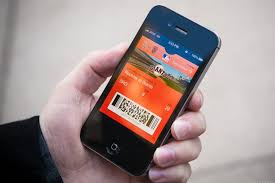 Apple Passbook lets users store passes such as event tickets, retail coupons, store cards and boarding passes on their Apple devices simply by scanning a barcode. But how many consumers are using this? Q2 2014 research by Flagship Research for BlueHornet found that nearly one-quarter (24.5%) of US mobile device users had used Passbook in the six months leading up to polling. Of course, not all respondents even owned Apple devices: 48.1% of smartphone users had an iPhone, while 56.1% of those with tablets owned an iPad.
Apple Passbook lets users store passes such as event tickets, retail coupons, store cards and boarding passes on their Apple devices simply by scanning a barcode. But how many consumers are using this? Q2 2014 research by Flagship Research for BlueHornet found that nearly one-quarter (24.5%) of US mobile device users had used Passbook in the six months leading up to polling. Of course, not all respondents even owned Apple devices: 48.1% of smartphone users had an iPhone, while 56.1% of those with tablets owned an iPad.
Those in the 25-to-34 age bracket were the most likely to have used Apple Passbook; 37.7% of that group had done so. Adults 35 to 45 landed in second at 30.1%. Meanwhile, younger millennials, often early adopters, sat in second-to-last place at 15.6%, leading only the oldest age group, 56- to 65-year-olds.
Respondents were most likely to use Apple Passbook for mobile coupons. BlueHornet noted that, despite coupons’ dominance, other use cases had potential. Airline boarding passes and payment information came in second and third, respectively, with percentages for each at around 45%. Nearly 36% had used Passbook for movie tickets.
June 2014 polling by Thrive Analytics found that 17% of US adult smartphone users had used Apple’s Passbook, compared with 79% who said the same about PayPal and 40% for Google Wallet. Despite lower usage, those who did turn to Passbook used it more often on a weekly basis, at 60% of users, compared with 49% of Google Wallet users and 40% of PayPal users.
However, Apple Passbook users had the lowest transaction amounts. Nearly 40% of smartphone users who had ever used Passbook typically spent less than $10 on a transaction, compared with 22% for PayPal and 17% for Google Wallet. And while just over one-fifth of those who turned to Apple Passbook did spend more than $30, this trailed the percentage who typically spent that when using Google Wallet for a transaction by 13 percentage points.
The app was launched in 2012, Apple has the greatest market share in Saudi Arabia, used by 64.5 percent of the local e-mobile population. In Egypt, iPad scored the highest share with 28.7 percent of the local e-mobile population using the device.
According to a report last year 9.1 million e-mobile users, accounting for 69 percent of the MENA e-mobile population, used mobile devices manufactured by Apple, RIM and Nokia. Blackberry ranked third with a 7.6 percent share while Nokia rounded off the list with a 5.3 percent share.
Mobile phone usage is rising in the Middle East, and the region is expected to account for the second-largest mobile phone population in the world.
Despite the fact that Asia-Pacific has the largest mobile phone population today, at more than 2.43 billion, making the region the most populous in the world overall. But the No. 2 region in terms of the number of mobile phone owners is the Middle East and Africa, where 525.8 million people of any age are expected to use a mobile phone at least monthly this year—significantly more than in North America or Western Europe.
According to the latest studies in the sector, about 40 percent of smartphone owners in the Middle East and Africa use the smart features in their devices and connect to the Internet to watch videos, download applications and play games online, while the rest do not have connections on their devices.


